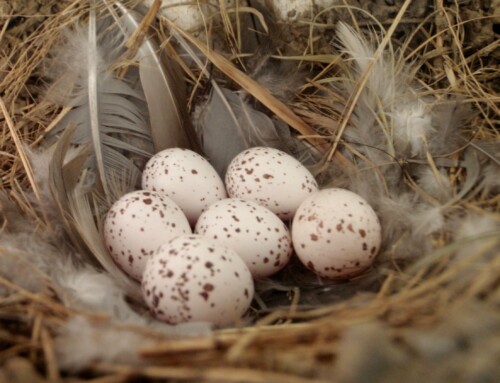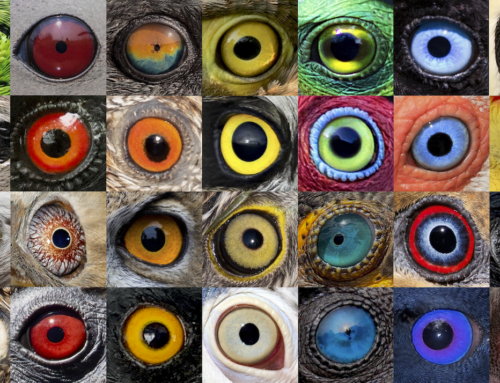 LINKED PAPER
LINKED PAPER
Vicariant events in the montane hummingbird genera Augastes and Schistes in South America. Chaves, A. V., Vasconcelos, M. F., Freitas, G. H., & Santos, F. R. 2020. IBIS. DOI: 10.1111/ibi.12777 VIEW
Physicist Richard Feynman captured the essence of scientific research in one of his lectures: “If it disagrees with experiment, it’s wrong. In that simple statement is the key to science. It doesn’t make any difference how beautiful your guess is, it doesn’t matter how smart you are, who made the guess, or what his name is … If it disagrees with experiment, it’s wrong. That’s all there is to it.” This principle does not only apply to physics. Biologists often make educated guesses – or hypotheses – about the evolutionary history of bird species and test them with genetic data. Take, for example, three hummingbird species that live in the Espinhaço Range in eastern Brazil: the Geoffroy’s Wedgebill (Schistes geoffroyi), the Hooded Visorbearer (Augastes lumachella) and the Hyacinth Visorbearer (A. scutatus). Morphological, genetic and behavioral data suggest that these colorful species are closely related (Remsen et al. 2015), but when did they originate? Ornithologists formulated two hypotheses and tested them.
A first guess
In 1995, José Maria Cardoso Da Silva proposed that the climatic cycles during the Pleistocene (from 2.5 million to ca. 11,000 years ago) resulted in the origin of these three species. A first vicariant event separated two populations, giving rise to the genera Augastes and Schistes. Later on, the Augastes population was split into a northern and southern group, evolving into the Hooded and Hyacinth Visorbearer that we know today. This scenario thus suggests a recent origin for the three species. However, a genetic analysis indicated that the genera diverged about 7 million years ago. And roughly 3.2 million years ago, the Hooded and Hyacinth Visorbearer each went their own evolutionary way. This means that the guess by Silva (1995) – no matter how beautiful it was – disagrees with the data. The origin of the Visorbearers was not driven by the climatic cycles during the Pleistocene.
Figure 1 A dated evolutionary tree for several hummingbird species. The genera Schistes and Augastes can be found in group 1 and diverged about 7 million years ago. Within the genus Augastes, two species originated around 3.2 million years ago.
Dry conditions
The results do support an alternative scenario, formulated by Marcelo Vasconcelos and his colleagues (2012). They envisioned a longer evolutionary history that started with the elevation of the Andes at the end of the Miocene (more than 5 million years ago) that caused changes in moist winds from the Pacific Ocean (Gregory-Wodzicki 2000). The consequent change in climatic conditions led to the establishment of a dry region running diagonally across South America (now known as the Caatinga, Cerrado and Chaco regions). These dry conditions separated the genera Augastes and Schistes about 7 million years ago. A few million years later, another geological event affected members of the genus Augastes. The formation of the Brazilian Plateau at the end of the Pliocene (between 5.3 and 2.5 million years ago) resulted in the spread of dry vegetation and isolated the ancestral populations of the Hooded and Hyacinth Visorbearer (Chaves et al. 2015). The details of this scenario remain to be determined, but we can figure it out by starting with an educated guess.
References
Chaves, A.V., Freitas, G.H.S., Vasconcelos, M.F. & Santos, F.R. (2015). Biogeographic patterns, origin and speciation of the endemic birds from eastern Brazilian mountaintops: a review. Systematics and Biodiversity 13: 1– 16. VIEW
Gregory‐Wodzicki, K.M. (2000). Uplift history of the Central and Northern Andes: a review. Geological society of America Bulletin 7: 1091– 1105. VIEW
Remsen, J.V., Jr, Stiles, G. & Mcguire, J.A. (2015). Classification of the Polytminae (Aves: Trochilidae). Zootaxa 3957: 143– 150. VIEW
Silva, J.M.C. (1995). Biogeographic analysis of the South American Cerrado avifauna. Steenstrupia 21: 49– 67. VIEW
Vasconcelos, M.F., Chaves, A.V. & Santos, F.R. (2012). First record of Augastes scutatus for Bahia refines the location of a purported barrier promoting speciation in the Espinhaço Range. Revista Brasileira de Ornitologia 20: 443– 446. VIEW
Image credits
Top right: Hyacinth visorbearer Augastes scutatus | Nortondefeis | CC BY-SA 4.0 Wikimedia Commons
Blog posts express the views of the individual author(s) and not those of the BOU.
If you want to write about your research in #theBOUblog, then please see here





